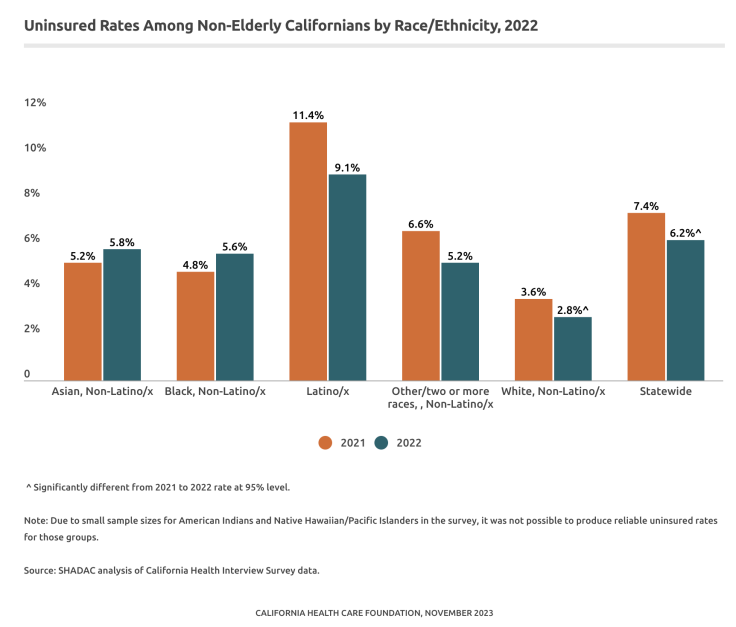
Latinos saw the highest rates of health insurance enrollment in California last year, but the group still lags behind others both state and nationwide.
According to a new Health Care Foundation Report, California reached an all-time low in the percentage of non-elderly residents without health insurance in 2022.
The survey showed that the rate dropped to 6.2 percent last year, compared to 2021's 7.4 percent. Furthermore, the long-term uninsured rate, which refers to non-elderly individuals without coverage for a year or more, also reached a historic low in 2022. The rate in this category decreased from 5.7 percent in 2021 to 4.5 percent in 2022.
Health Insurance Rates for Latinos

The state's Latino population registered the most substantial improvement, with the percentage of uninsured Latinos declining from 11.4 percent in 2021 to 9.1 percent in 2022.
The figure marks a historic low for the Latino and Hispanic communities in California. However, they still have the highest rates of uninsurance compared to other ethnicities. White and non-Latino people had an uninsured rate of 2.8 percent, Black people had an uninsured rate of 5.6 percent and Asian-American people had an uninsured rate of 5.8 percent.
This disparity is also present at a national level, with 2022 Census Bureau Data showing that 23.4 percent of Latinos in the U.S. lacked health insurance, when the figure for Whites was of 6.8 percent.
The University of California Los Angeles conducted a study in 2019 that found Latinos are less likely to have access to healthcare because of a lack of access through an employer and barriers such as citizenship requirements. Additionally, a 2021 issue brief from the Assistant Secretary for Planning and Evaluation Office of Health Policy found that in the U.S., Latino health insurance rates have been rising, but there are still a few notable barriers that create health barriers for Latinos.
One of them is the language barrier. The ASPCE said they contribute to disparities in access to care because Latinos who primarily speak Spanish are more likely to lack a usual source of care, have fewer outpatient visits and receive fewer prescription medications than Latinos who are English proficient.
Challenges Ahead
The report from the California Health Care Foundation said that although these findings represent a significant step forward in healthcare coverage, there are still challenges in the future. In 2023, the federal continuous coverage requirement for Medicaid ended. This change is anticipated to result in as many as two to three million Californians losing their Medi-Cal coverage. The impact of these individuals leaving the program and whether they can successfully transition to other forms of coverage will have a substantial impact on the state's uninsured rate moving forward.
Additionally, the state faces other challenges, including the impact of inflation, which could make it increasingly difficult to sustain the healthcare coverage gains achieved in recent years. Therefore, continuous monitoring of data from 2023 and beyond is paramount to fully understand the complex dynamics at play, including the influence of the pandemic and the consequences of the cessation of associated coverage protections and other policy changes on California's healthcare landscape, according to the report from the California Health Care Foundation.
© 2025 Latin Times. All rights reserved. Do not reproduce without permission.





